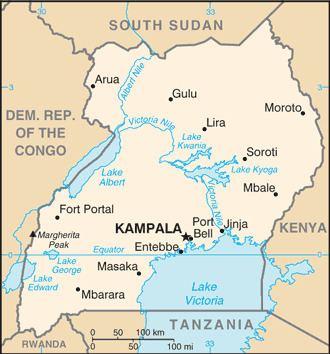Founded 2009 Number of teams 20 | Confederation CAF Divisions 2 Level on pyramid 2 | |
 | ||
The Ugandan Big League is the second tier of the Federation of Uganda Football Associations. The league was founded in 2009 and comprises two divisions known respectively as the Elgon Group and the Rwenzori Group .
Contents
Original concept
The concept of re-structuring Ugandan football with the creation of a new second tier league was first mooted in October 2008 by FUFA. The idea that was single-handedly promoted by Eng. Moses Magogo was ridiculed, resisted, and fought by everyone. Although Magogo felt abandoned but he was buoyed by the inaugural clubs that were determined to proceed. Eventually out of persistence, Magogo won one by one convert and eventually the league was passed by the FUFA Executive Committee. The new national second division league, known as the FUFA Big League (FBL), was to cater for leading sides in the five regions. Second tier sides at that time competed at the regional level, with many of them failing to cope with advancement whenever they gained promotion to the national Super League.
FUFA Competitions Committee secretary, Moses Magogo, confirmed that qualification to the Super League through the regional mini leagues would be ended and replaced by promotion through the national first division league. A major objective of the initiative was to help raise the standard of football outside the Super League.
Administration
The FUFA Big League (FBL) is managed by the FUFA Competitions Committee and was launched on 6 August 6, 2009. The following clubs are eligible to play in the FBL:
If there are more than 16 clubs in the FBL it is divided into two groups with each group being run as a league competition. However, if there are less than 17 clubs, the competition will be run as a single group league competition.
The Competitions Committee set stringent standards for member clubs covering computer literacy, a sound bank account, stadia that meet FUFA standards, qualified coaches and doctors. The initial requirements for clubs included:
Initial participants
The 16 clubs that competed in the first season of the FBL in 2009-10 were as follows:
Sponsorship
On 1 November 2013 it was announced that the Airtel Telecommunications company had signed a four-year contract providing a total of 400 million shillings (about 160,000 US dollars) towards funding different activities under both the FUFA Big League and the Ugandan Cup until 2016.
